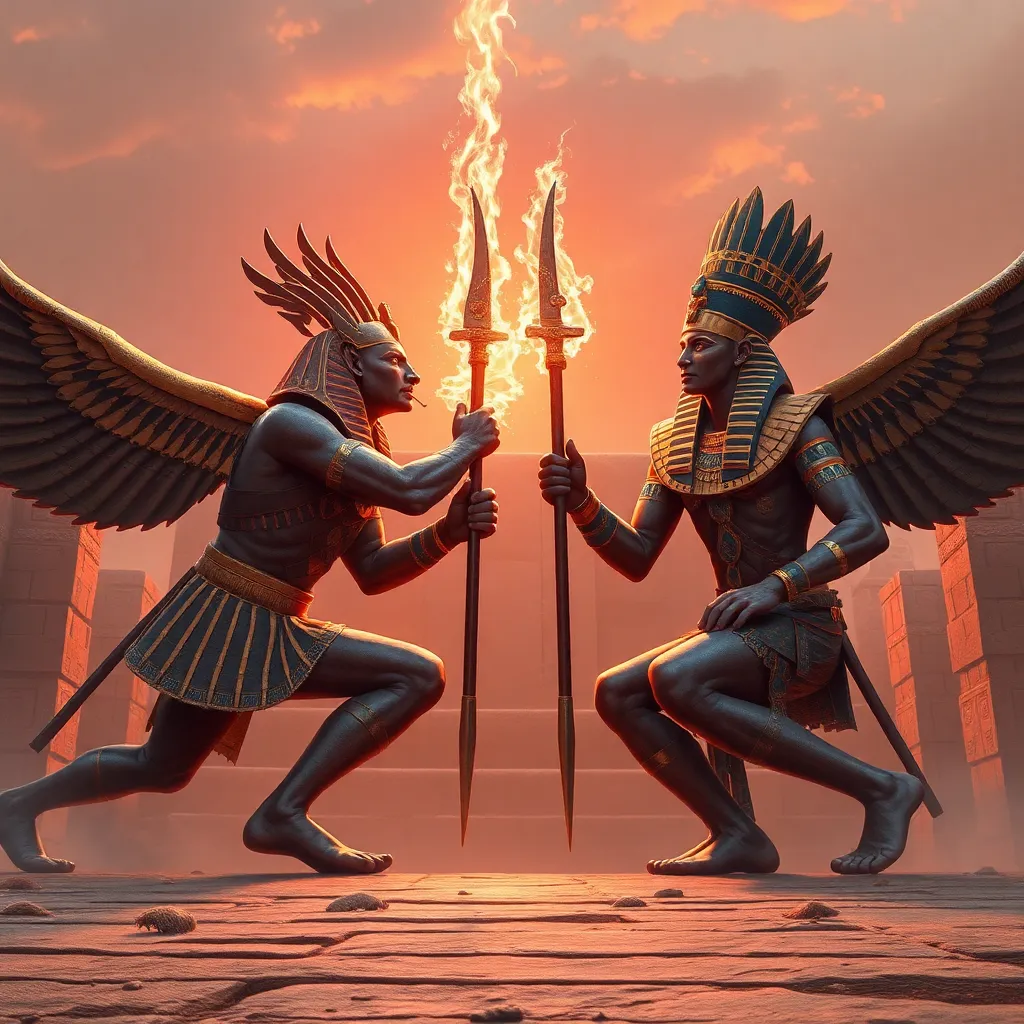The Battle for the Throne of Egypt: The Epic Struggle Between Horus and Set and its Impact on Ancient Egyptian History
I. Introduction
The mythological battle between Horus and Set is one of the most significant narratives in ancient Egyptian mythology. This epic struggle not only reflects the duality of order and chaos but also encapsulates the divine right to rule, deeply influencing the political and spiritual landscape of ancient Egypt. The conflict between these two powerful deities shaped the cultural and religious frameworks, establishing a foundation for Egyptian thought and governance.
II. The Characters in the Mythology
A. Horus: The Falcon God and Symbol of Kingship
Horus, often depicted as a falcon or a man with a falcon head, embodies the principles of kingship and divine protection. He is associated with the sky and is revered as a god of war and hunting. Horus represents:
- Protection and safety
- Victory and strength
- The rightful heir to Osiris, his father
As the rightful heir to the throne of Egypt, Horus’s claim is rooted in his desire to avenge his father’s murder by Set and reclaim the kingdom.
B. Set: The God of Chaos and Disorder
Set, often represented as a man with the head of a mysterious animal, symbolizes chaos, storms, and the desert. He is a complex figure, embodying both destruction and necessary change. His motivations to challenge Horus stem from:
- Desire for power and dominance
- Jealousy of Osiris and Horus
- Representation of the chaotic forces in nature
Set’s character highlights the tension between stability and turmoil, making him a formidable opponent to Horus.
III. The Mythical Narrative of the Battle
A. Overview of the story’s key events
The conflict between Horus and Set has its origins in the tragic death of Osiris, who was murdered by Set. Upon Osiris’s death, Set usurped the throne, prompting Horus to rise against him. Key events in their battle include:
- Horus’s quest to avenge his father
- A series of fierce battles between Horus and Set
- Interventions by other gods, including Isis, the mother of Horus
These conflicts are not merely physical battles but also symbolize the struggle for rightful leadership and cosmic order.
B. Symbolic interpretations of the conflict
The battles between Horus and Set hold profound symbolic meanings, representing:
- The eternal struggle between light (Horus) and darkness (Set)
- The cyclical nature of life and death
- The importance of justice and rightful rulership
IV. Theological Implications of the Battle
A. The struggle as a representation of order versus chaos
The battle between Horus and Set is often interpreted as an allegory for the larger cosmic struggle between order and chaos. Horus, as the embodiment of order, seeks to restore balance to the universe disrupted by Set’s chaotic influence.
B. The role of divine justice and legitimacy in leadership
This myth encapsulates the belief that true leadership must be divinely sanctioned. The legitimacy of pharaohs was often tied to the narrative of Horus’s triumph, reinforcing the idea that rulers were chosen by the gods.
V. The Impact on Ancient Egyptian Society
A. Influence on pharaonic succession and legitimacy
The story of Horus and Set had a profound impact on the concept of kingship in ancient Egypt. Pharaohs were considered the earthly embodiment of Horus, and their legitimacy was often justified through the myth. This led to:
- Rituals and ceremonies that emphasized the pharaoh’s divine right to rule
- The establishment of dynastic lines that claimed descent from Horus
B. Integration of the myth into state ideology and governance
The narrative of Horus and Set was intertwined with the political structure of ancient Egypt. The myth served as a tool for:
- Unifying the people under a common cultural and spiritual identity
- Justifying military campaigns and territorial expansions as divine mandates
VI. Artistic Representations of Horus and Set
A. Depictions in ancient art and architecture
Art and architecture from various periods of ancient Egypt reflect the importance of Horus and Set. Common representations include:
- Statues of Horus in temples, often depicted as a falcon or a falcon-headed man
- Reliefs illustrating the battles between Horus and Set on temple walls
B. Evolution of symbolism in various dynasties
Over time, the depictions of Horus and Set evolved, reflecting changes in religious beliefs and political ideologies. The symbolism associated with each deity adapted to the context of the ruling dynasty, showcasing their enduring significance.
VII. The Legacy of the Horus-Set Conflict
A. The lasting influence on later Egyptian myths and religious practices
The conflict between Horus and Set has left a lasting legacy in Egyptian mythology, influencing subsequent myths and religious practices. The themes of conflict, legitimacy, and divinity continued to resonate throughout Egyptian history.
B. Reflections of the battle in modern interpretations and literature
Modern interpretations of the Horus-Set conflict can be seen in various forms of literature, art, and popular culture. The struggle between order and chaos remains a relevant narrative that transcends time, inspiring contemporary discussions about power dynamics and leadership.
VIII. Conclusion
The battle between Horus and Set is not merely a story from ancient mythology; it is a profound narrative that encapsulates the essence of ancient Egyptian culture and governance. The significance of this conflict resonates through history, reflecting the complexities of power, legitimacy, and the eternal struggle between order and chaos. As we continue to explore these ancient stories, the legacy of Horus and Set offers invaluable insights into our understanding of leadership and conflict in both historical and modern contexts.




